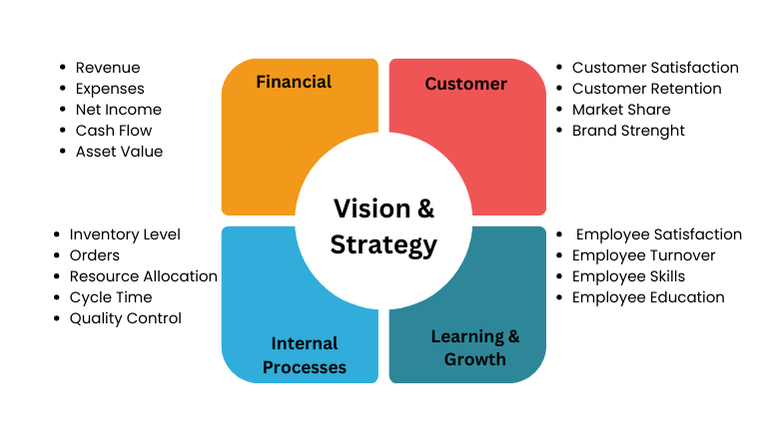By the time something is visibly broken, it’s already been costing you—whether it’s wasted resources, time, or missed opportunities.
If you’re leading a business process redesign, there’s one golden rule you can’t ignore: alignment with your strategic goals is essential for success. But how do you make sure that your processes, systems, and people are all working toward the same objectives—especially when things seem “fine”?
In this post, we’ll break down a roadmap that will guide you from discovery to a future-proofed process redesign, keeping your business goals at the forefront.
Step 1: Understand Your Business Needs and Objectives
Before making any changes, you must know exactly what you aim for. This may sound obvious, but companies often jump into process changes without clearly understanding their strategic objectives. That’s like embarking on a road trip without knowing your destination or, even worse, without a map.
Here’s what you need to do:
- Start with Strategic Plans and Goals
Align your process redesign with your company’s overall strategy. Get access to your organization’s strategic plans, or take a crack at defining one if it doesn’t exist. Use a framework like the Balanced Scorecard (BSC) to break down strategy into actionable objectives. Ask yourself: What are the critical business challenges we’re facing? Are there opportunities we haven’t tapped into yet?


Pro Tip: Tools like Process Space® Platform can help you organize and track these goals, ensuring your process changes directly contribute to the broader business strategy.
2. Map Your Stakeholders
Every process impacts someone. Use a stakeholder map to identify the decision-makers, process owners, and people who will feel the effects of any changes. Knowing who these key players are will ensure no critical inputs are missed—missing their input is a sure way to invite resistance or cause disruption.
3. Conduct a Current State Analysis
Before designing the future, you need to fully understand the present.
Gather data on current processes, metrics, and performance indicators. Who can help? Start with your Business Intelligence (BI) team, process owners, and customer feedback systems. They can provide a wealth of information on how things are working—or not.

Pro Tip: Don’t overlook departments because they seem to have nothing to do with your process. Using a tool like the Process Space® Platform for stakeholder mapping ensures all teams are involved early, preventing delays and miscommunication that could derail your project.
Step 2: Design with Precision – A Checklist
Once you’ve analyzed your current state, it’s time to design the future state: the processes that will get you where you need to go.
Avoid falling into the trap of overcomplicating things. Tools like the Process Space® Platform make it fast and easy to map out processes without needing prior expertise. Best of all, you can keep the visual process mapping and the context behind it all in one simple tool—no more missteps or delays—just smooth execution.
We’ve developed a simple checklist to help keep you on track
1. Document Current (“As-Is”) Processes
Make sure you’ve thoroughly documented the existing process. Where are the bottlenecks? Where are the inefficiencies? A detailed understanding of the “As-Is” process allows you to identify what’s working—and, more importantly, what’s not. Go deep.
2. Design theFuture State (“To-Be”) Process
Once you understand where you’re starting, design the process for where you want to go. Focus on removing non-value-adding steps and streamlining decision points to optimize workflows. Tools like the Process Space®Platform are perfect for creating clear and visual process maps.
3. Engage Stakeholders Early and Often
Process redesign is not just a technical exercise—it’s about people. Engaging stakeholders from the start ensures buy-in and reduces resistance when the changes are implemented. After all, no one likes to be blindsided by new processes.

Pro Tip: Involve the people who will actually use the new process.
Step 3: Align Technology with Your Processes
Technology should serve your process, not the other way around. Here’s how to make sure your tech is up to the challenge:
1. Design Your IT Architecture
Your tech systems should support the “To-Be” processes, being compatible and fully integrated. Use APIs to enable systems to talk to each other and middleware to handle data exchange.

Pro Tip: If you’re dealing with legacy systems, start planning how these will interact with new technologies. Custom connectors or data transformation tools may be needed to avoid data silos.
2. Security First
Security should be baked into your system design from day one. Use encryption for data both in transit and at rest. Employ Role-Based Access Control (RBAC) to ensure that only the right people have access to sensitive information.

Pro Tip: With growing regulations like GDPR, keeping your systems secure isn’t just a best practice—it’s mandatory. Process Space® helps you monitor access points and keeps your processes compliant with security requirements from day one.
Step Four: Measure Your Progress with KPIs That Matter
Want to keep your project on track, within budget, and delivering real value?
Start by tracking the right metrics—it’s your secret weapon for success.
Set measurable objectives and track them using Key Performance Indicators (KPIs).
Here are some KPIs to monitor during the design phase:
- Percentage of Milestones Achieved on Schedule: Aim for 95% or higher.
- “First Time Right” Completion Rate: Strive for 90% of tasks completed correctly without the need for rework.
- Time and Cost of Rework: Keep rework under 5% of the total project time and budget.

Pro Tip: The Process Space®Platform allows you to track these KPIs in real time, giving you the data you need to make informed decisions and adjustments as needed.
Align, Engage, and Execute
Redesigning your business processes isn’t just about tweaking a few workflows—it’s about ensuring that every process aligns with your strategic objectives.
Whether expanding into new markets, managing a complex product portfolio, or launching new brands, the goal is to future-proof your organization.
The Process Space® Platform allows you to analyze, design, and track your process improvements, helping you achieve real value for your business.
Now it’s your turn:
With growing regulations like GDPR, keeping your systems secure isn’t just a best practice—it’s mandatory. Process Space® helps you monitor access points and keeps your processes compliant with security requirements from day one.Do you have questions about how your processes stack up?
Want to learn more about aligning your processes with business goals? Let’s chat! Reach out to explore how we can help you drive process optimization in your organization.
